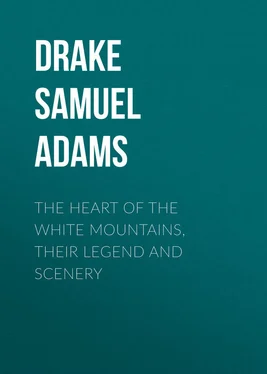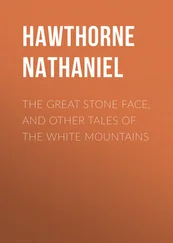Samuel Drake - The Heart of the White Mountains, Their Legend and Scenery
Здесь есть возможность читать онлайн «Samuel Drake - The Heart of the White Mountains, Their Legend and Scenery» — ознакомительный отрывок электронной книги совершенно бесплатно, а после прочтения отрывка купить полную версию. В некоторых случаях можно слушать аудио, скачать через торрент в формате fb2 и присутствует краткое содержание. Жанр: foreign_antique, foreign_prose, на английском языке. Описание произведения, (предисловие) а так же отзывы посетителей доступны на портале библиотеки ЛибКат.
- Название:The Heart of the White Mountains, Their Legend and Scenery
- Автор:
- Жанр:
- Год:неизвестен
- ISBN:нет данных
- Рейтинг книги:4 / 5. Голосов: 1
-
Избранное:Добавить в избранное
- Отзывы:
-
Ваша оценка:
- 80
- 1
- 2
- 3
- 4
- 5
The Heart of the White Mountains, Their Legend and Scenery: краткое содержание, описание и аннотация
Предлагаем к чтению аннотацию, описание, краткое содержание или предисловие (зависит от того, что написал сам автор книги «The Heart of the White Mountains, Their Legend and Scenery»). Если вы не нашли необходимую информацию о книге — напишите в комментариях, мы постараемся отыскать её.
The Heart of the White Mountains, Their Legend and Scenery — читать онлайн ознакомительный отрывок
Ниже представлен текст книги, разбитый по страницам. Система сохранения места последней прочитанной страницы, позволяет с удобством читать онлайн бесплатно книгу «The Heart of the White Mountains, Their Legend and Scenery», без необходимости каждый раз заново искать на чём Вы остановились. Поставьте закладку, и сможете в любой момент перейти на страницу, на которой закончили чтение.
Интервал:
Закладка:
“Were we in the sixteenth century,” said George, “I should say this was the laboratory of some famous alchemist.”
Further investigation was cut short by the entrance of our host, who was a venerable-looking man, turned of eighty, with a silver beard falling upon his breast, and a general expression of benignity. He stooped a little, but seemed hale and hearty, notwithstanding the weight of his fourscore years.
Doctor Bemis received us graciously. For an hour he entertained us with the story of his life among the mountains, “to which,” said he, “I credit the last forty-five years – for I at first came here in pursuit of health.” After he had satisfied our curiosity concerning himself, which he did with perfect bonhomie , I asked him to describe Abel Crawford, the veteran guide of the White Hills.
“Abel,” said the doctor, “was six feet four; Erastus, the eldest son, was six feet six, or taller than Washington; and Ethan was still taller, being nearly seven feet. In fact, not one of the sons was less than six feet; so you may imagine what sort of family group it was when ‘his boys,’ as Abel loved to call them, were all at home. Ah, well!” continued the doctor, with a sigh, “that kind of timber does not flourish in the mountains now. Why, the very sight of one of those giants inspired the timid with confidence. Ethan, called in his day the Giant of the Hills, was a man of iron frame and will. Fear and he were strangers. He would take up an exhausted traveller in his sinewy arms and carry him as you would a baby, until his strength or courage returned. The first bridle-path up the mountain was opened by him in – let me see – ah! I have it, it was in 1821. Ethan, with the help of his father, also built the Notch House above. 7 7 This house stood just within the entrance to the Notch, from the north, or Fabyan side. It was for some time kept by Thomas J., one of the famous Crawfords. Travellers who are a good deal puzzled by the frequent recurrence of the name “Crawford’s” will recollect that the present hotel is now the only one in this valley bearing the name.
“Abel was long-armed, lean, and sinewy. Doctor Dwight, whose ‘Travels in New England’ you have doubtless read, stopped with Crawford, on his way down the Notch, in 1797. His nearest neighbor then, on the north, was Captain Rosebrook, who lived on or near the site of the present Fabyan House. Crawford’s life of hardship had made little impression on a constitution of iron. At seventy-five he rode the first horse that reached the summit of Mount Washington. At eighty he often walked to his son’s (Thomas J. Crawford), at the entrance of the Notch, before breakfast. I recollect him perfectly at this time, and his appearance was peculiarly impressive. He was erect and vigorous as one of those pines on yonder mountain. His long white hair fell down upon his shoulders, and his fresh, ruddy face was always expressive of good-humor.
“The destructive freshet of 1826,” continued the doctor, “swept everything before it, flooding the intervale, and threatening the old house down there with instant demolition. During that terrible night, when the Willey family perished, Mrs. Crawford was alone with her young children in the house. The water rose with such rapidity that she was driven to the upper story for safety. While here, the thud of floating trees, driven by the current against the house, awakened new terrors. At every concussion the house trembled. Wooden walls could not long stand that terrible pounding. The heroic woman, alive to the danger, seized a stout pole, and, going to the nearest window, kept the side of the house exposed to the flood free from the mass of wreck-stuff collected against it. She held her post thus throughout the night, until the danger had passed. When the flood subsided, Crawford found several fine trout alive in his cellar.”
“When do the great freshets usually occur?” I asked.
“In the autumn,” replied our host. “It is not the melting snows, but the sudden rainfalls that we fear.”
“Yes,” resumed he, reflectively, “the Crawfords were a family of athletes. With them the race of guides became extinct. Soon after settling here, Abel went with his wife to Bartlett on some occasion, leaving their two boys in the care of a hired man. When they had gone, this man took what he could find of value and decamped. When Abel returned, which he did on the following day, he immediately set out in pursuit of the thief, overtook him thirty miles from here, in the Franconia forests, flogged him within an inch of his life, and let him go.”
“Sixty miles on foot, and alone, to recover a few stolen goods, and punish a thief!” cried the astonished colonel; “that beats Daniel Boone.”
“Yes; and what is more, the boys were brought up to face hunger, cold, fatigue, with Indian stoicism, and even to encounter bears, lynxes, and wolves with no other weapons than those provided by nature. There, now, was Ethan, for example,” said the doctor, smiling at the recollection. “One day he took it into his head to have a tame bear for the diversion of his guests. Well, he caught a young one, half grown, and remarkably vicious, in a trap. But how to get him home! At length Ethan tied his fore and hind paws together so he couldn’t scratch, and put a muzzle of withes over his nose so he couldn’t bite. Then, shouldering his prize as he would a bag of meal, the guide started for home, in great glee at the success of his clever expedient. He had not gone far, however, before Bruin managed to get one paw wholly and his muzzle partly free, and began to scratch and struggle and snap at his captor savagely. Ethan wanted to get the bear home terribly; but, after having his clothing nearly torn off his back, he grew angry, and threw the beast upon the ground with such force as to kill him instantly.”
“Report,” said I, “credits you with naming most of the mountains which overlook the intervale.”
“Yes,” replied the doctor, “Resolution, over there” – indicating the mountain allied to Crawford, and to the ridge which forms one of the buttresses of Mount Washington – “I named in recognition of the perseverance of Mr. Davis, who became discouraged while making a path to Mount Washington in 1845.”
“Is the route practicable?” I asked.
“Practicable, yes; but nearly obliterated, and seldom ascended. Have you seen Frankenstein?” demanded the doctor, in his turn.
We replied in the negative.
“It will repay a visit. I named it for a young German artist who passed some time with me, and who was fascinated by its rugged picturesqueness. Here is some of his work,” pointing to the paintings which, apparently, formed the foundation of the collection on the walls.
Our host accompanied us to the door with a second injunction not to forget Frankenstein.
“You have something there good for the eyes,” I observed, indicating the green carpet of the vale beneath us.
“True; but you should have seen it when the deer boldly came down the mountain and browsed quietly among the cattle. That was a pretty sight, and one of frequent occurrence when I first knew the place. At that time,” he continued, “the stage passed up every other day. Sometimes there were one or two, but seldom three passengers.”
Proceeding on our way, we now had a fine view of the Giant’s Stairs, which we had already seen from Mount Carrigain, but less boldly outlined than they appear from the valley, where they really look like two enormous steps cut on the very summit of the opposite ridge. No name could be more appropriate, though each of the degrees of this colossal staircase demands a giant not of our days; for they are respectively three hundred and fifty, and four hundred and fifty feet in height. It was over those steps that the Davis path ascended.
Читать дальшеИнтервал:
Закладка:
Похожие книги на «The Heart of the White Mountains, Their Legend and Scenery»
Представляем Вашему вниманию похожие книги на «The Heart of the White Mountains, Their Legend and Scenery» списком для выбора. Мы отобрали схожую по названию и смыслу литературу в надежде предоставить читателям больше вариантов отыскать новые, интересные, ещё непрочитанные произведения.
Обсуждение, отзывы о книге «The Heart of the White Mountains, Their Legend and Scenery» и просто собственные мнения читателей. Оставьте ваши комментарии, напишите, что Вы думаете о произведении, его смысле или главных героях. Укажите что конкретно понравилось, а что нет, и почему Вы так считаете.












